Azure Table Storage offers scalable, NoSQL cloud storage for structured data. It supports key-value pairs, ensuring fast access and cost-effective storage for large datasets.
Top companies trust Airbyte to centralize their Data








This includes selecting the data you want to extract - streams and columns -, the sync frequency, where in the destination you want that data to be loaded.



This includes selecting the data you want to extract - streams and columns -, the sync frequency, where in the destination you want that data to be loaded.

Set up a source connector to extract data from in Airbyte
Choose from one of 400 sources where you want to import data from. This can be any API tool, cloud data warehouse, database, data lake, files, among other source types. You can even build your own source connector in minutes with our no-code no-code connector builder.

Configure the connection in Airbyte
The Airbyte Open Data Movement Platform
The only open solution empowering data teams to meet growing business demands in the new AI era.
Leverage the largest catalog of connectors
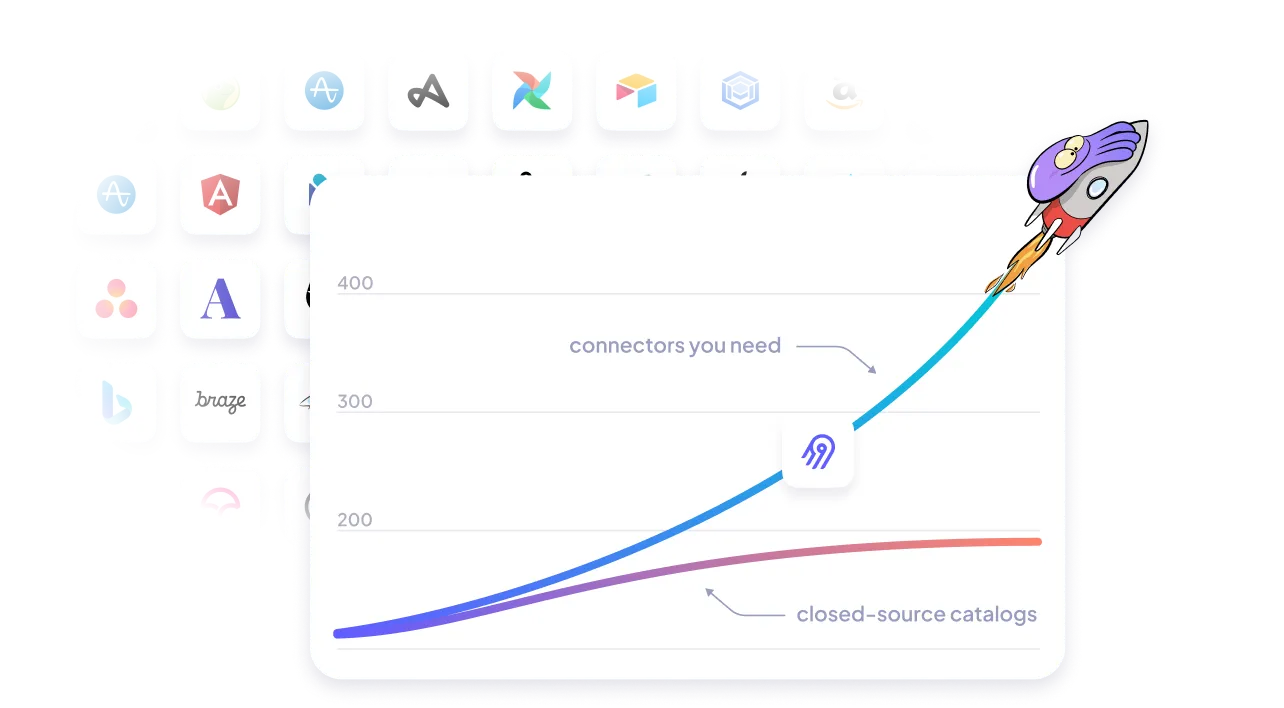
Cover your custom needs with our extensibility
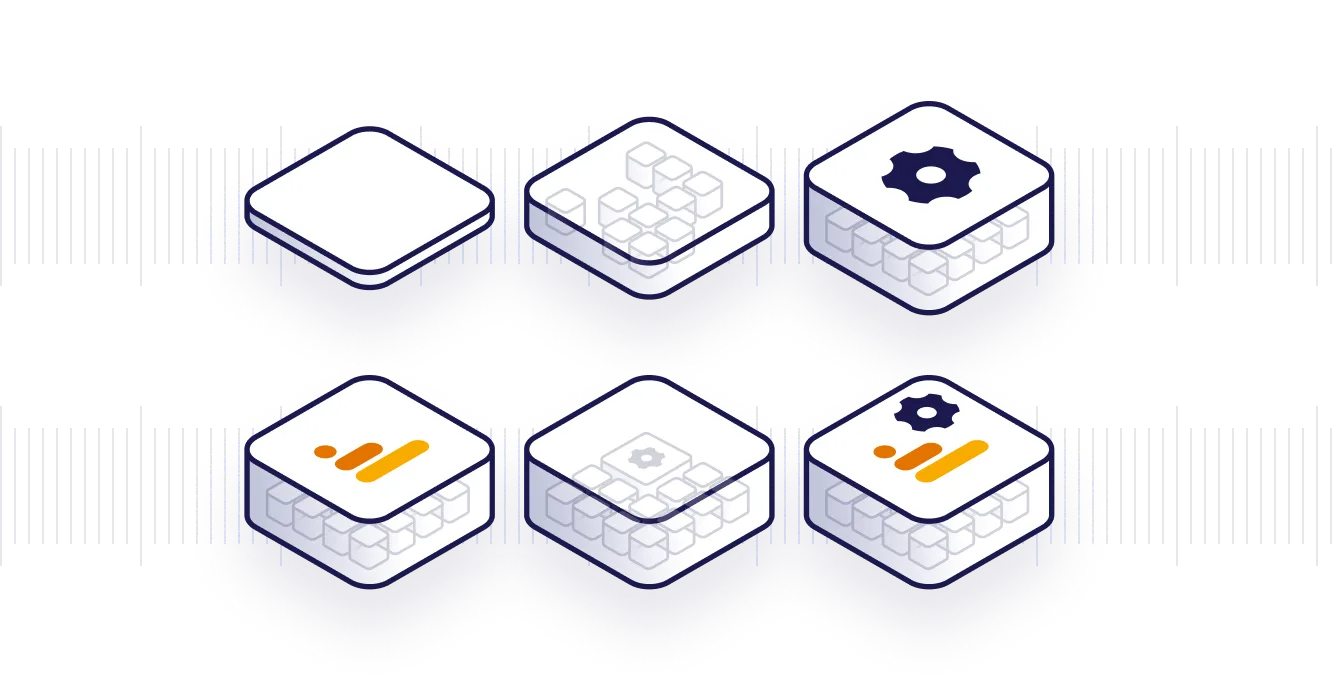
Free your time from maintaining connectors, with automation
- Automated schema change handling, data normalization and more
- Automated data transformation orchestration with our dbt integration
- Automated workflow with our Airflow, Dagster and Prefect integration
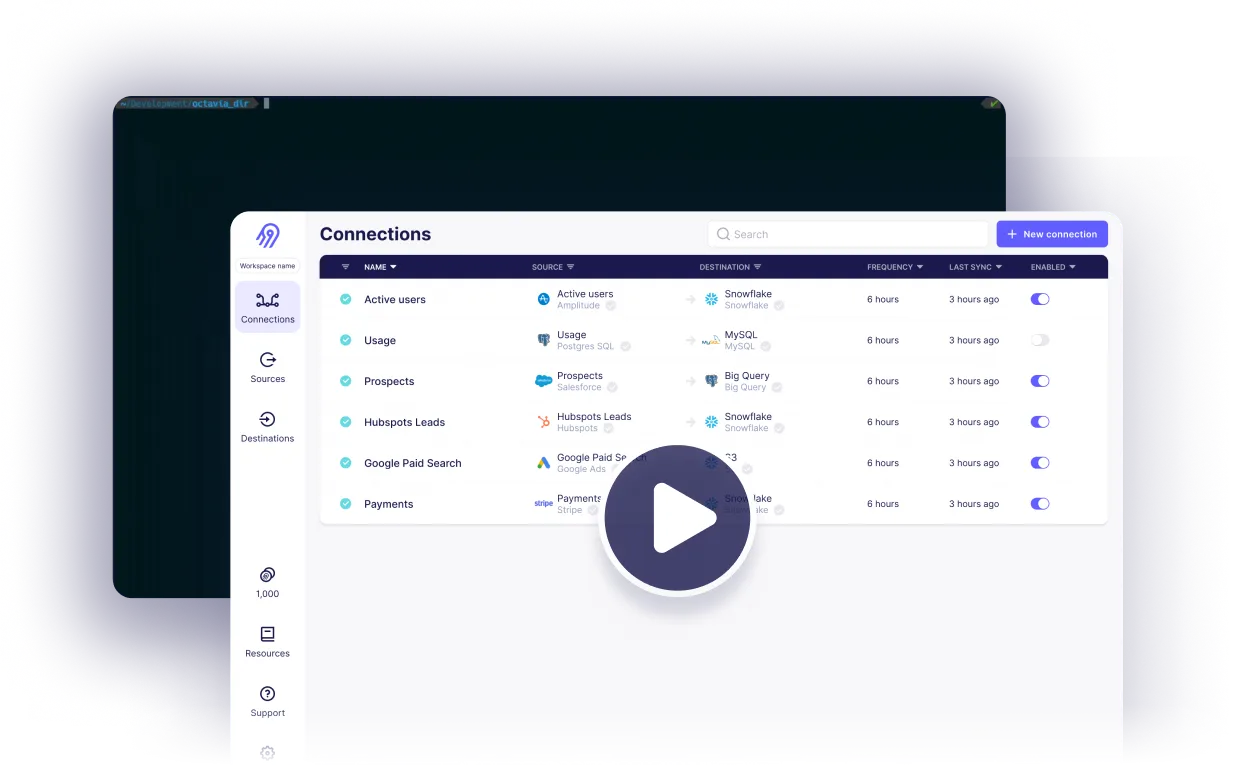
Reliability at every level
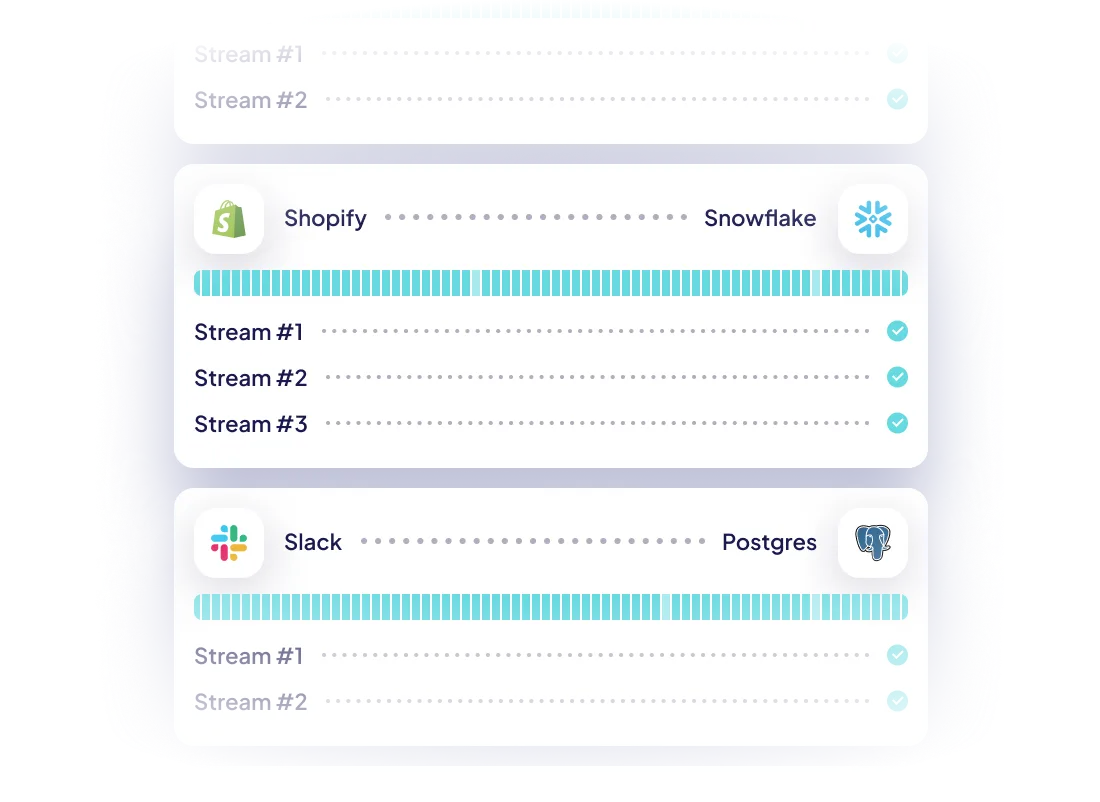


Ship more quickly with the only solution that fits ALL your needs.
As your tools and edge cases grow, you deserve an extensible and open ELT solution that eliminates the time you spend on building and maintaining data pipelines
Leverage the largest catalog of connectors

Cover your custom needs with our extensibility

Free your time from maintaining connectors, with automation
- Automated schema change handling, data normalization and more
- Automated data transformation orchestration with our dbt integration
- Automated workflow with our Airflow, Dagster and Prefect integration

Reliability at every level



Ship more quickly with the only solution that fits ALL your needs.
As your tools and edge cases grow, you deserve an extensible and open ELT solution that eliminates the time you spend on building and maintaining data pipelines
Leverage the largest catalog of connectors

Cover your custom needs with our extensibility

Free your time from maintaining connectors, with automation
- Automated schema change handling, data normalization and more
- Automated data transformation orchestration with our dbt integration
- Automated workflow with our Airflow, Dagster and Prefect integration

Reliability at every level



Move large volumes, fast.
Change Data Capture.
Security from source to destination.

We support the CDC methods your company needs
Log-based CDC



Timestamp-based CDC


Airbyte Open Source


Airbyte Cloud


Airbyte Enterprise

Why choose Airbyte as the backbone of your data infrastructure?
Keep your data engineering costs in check
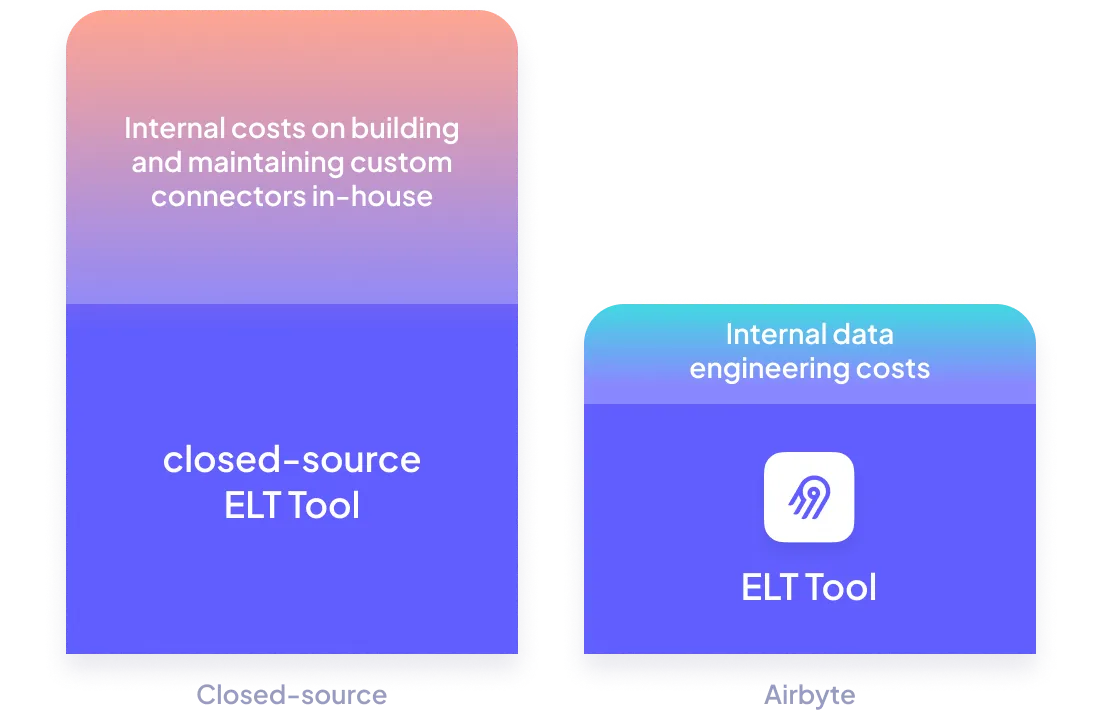
Get Airbyte hosted where you need it to be
- Airbyte Cloud: Have it hosted by us, with all the security you need (SOC2, ISO, GDPR, HIPAA Conduit).
- Airbyte Enterprise: Have it hosted within your own infrastructure, so your data and secrets never leave it.
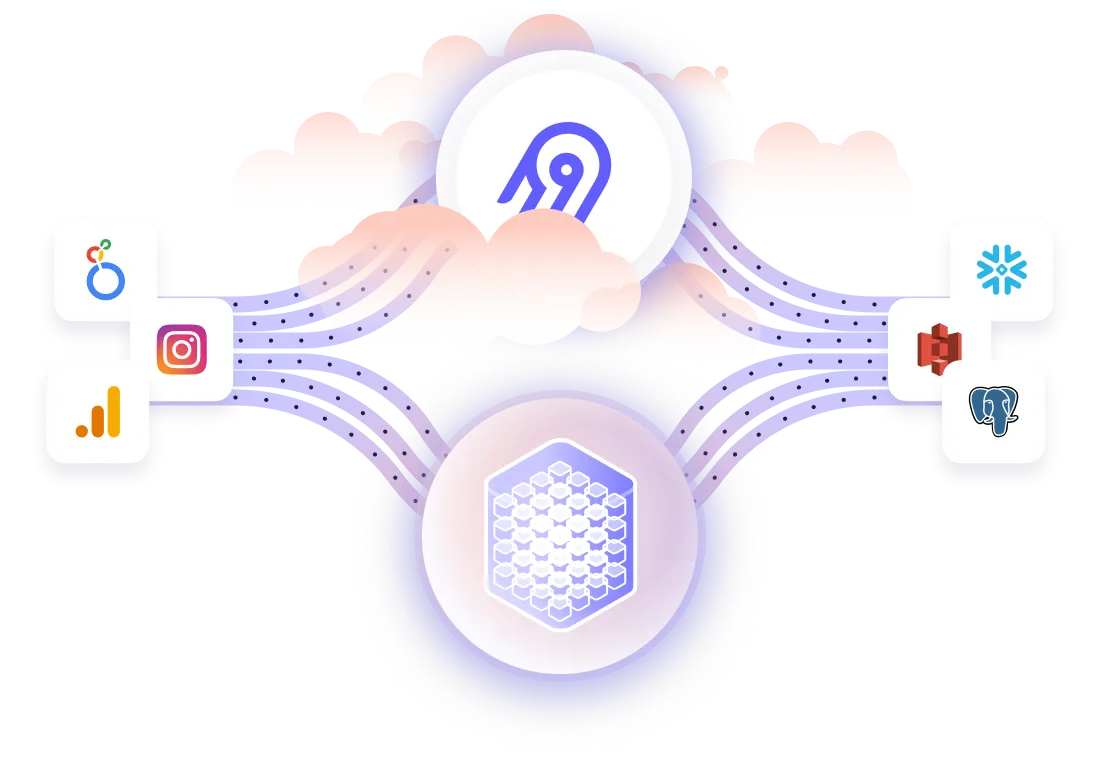
White-glove enterprise-level support
Including for your Airbyte Open Source instance with our premium support.
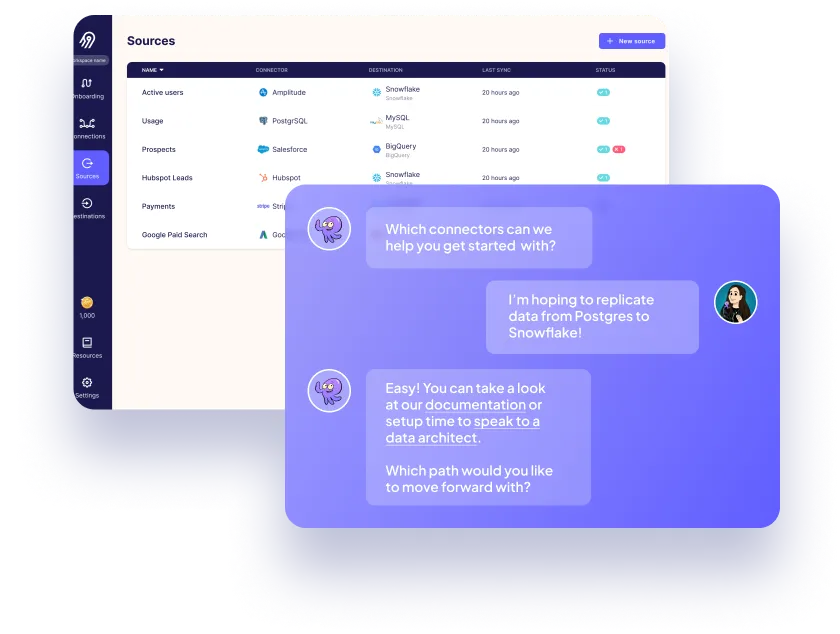
Airbyte supports a growing list of destinations, including cloud data warehouses, lakes, and databases.
Airbyte supports a growing list of destinations, including cloud data warehouses, lakes, and databases.
Airbyte supports a growing list of sources, including API tools, cloud data warehouses, lakes, databases, and files, or even custom sources you can build.



Fnatic, based out of London, is the world's leading esports organization, with a winning legacy of 16 years and counting in over 28 different titles, generating over 13m USD in prize money. Fnatic has an engaged follower base of 14m across their social media platforms and hundreds of millions of people watch their teams compete in League of Legends, CS:GO, Dota 2, Rainbow Six Siege, and many more titles every year.
Ready to get started?
FAQs
What is ETL?
ETL, an acronym for Extract, Transform, Load, is a vital data integration process. It involves extracting data from diverse sources, transforming it into a usable format, and loading it into a database, data warehouse or data lake. This process enables meaningful data analysis, enhancing business intelligence.
Azure Table storage, which is a service that stores non-relational structured data in the cloud and it is well known as structured NoSQL data. Azure Table storage is a service that stores structured NoSQL data in the cloud, providing a key/attribute store with a schema less design. Azure Table storage is a very popular service used to store structured NoSQL data in the cloud, providing a Key/attribute store. One can use it to store large amounts of structured, non-relational data.
Azure Table Storage's API gives access to structured data in the form of tables. The tables are composed of rows and columns, and each row represents an entity. The API provides access to the following types of data:
1. Partition Key: A partition key is a property that is used to partition the data in a table. It is used to group related entities together.
2. Row Key: A row key is a unique identifier for an entity within a partition. It is used to retrieve a specific entity from the table.
3. Properties: Properties are the columns in a table. They represent the attributes of an entity and can be of different data types such as string, integer, boolean, etc.
4. Timestamp: The timestamp is a system-generated property that represents the time when an entity was last modified.
5. ETag: The ETag is a system-generated property that represents the version of an entity. It is used to implement optimistic concurrency control.
6. Query results: The API allows querying of the data in a table based on specific criteria. The query results can be filtered, sorted, and projected to retrieve only the required data.
Overall, Azure Table Storage's API provides access to structured data that can be used for various purposes such as storing configuration data, logging, and session state management.
What is ELT?
ELT, standing for Extract, Load, Transform, is a modern take on the traditional ETL data integration process. In ELT, data is first extracted from various sources, loaded directly into a data warehouse, and then transformed. This approach enhances data processing speed, analytical flexibility and autonomy.
Difference between ETL and ELT?
ETL and ELT are critical data integration strategies with key differences. ETL (Extract, Transform, Load) transforms data before loading, ideal for structured data. In contrast, ELT (Extract, Load, Transform) loads data before transformation, perfect for processing large, diverse data sets in modern data warehouses. ELT is becoming the new standard as it offers a lot more flexibility and autonomy to data analysts.
What is ETL?
ETL, an acronym for Extract, Transform, Load, is a vital data integration process. It involves extracting data from diverse sources, transforming it into a usable format, and loading it into a database, data warehouse or data lake. This process enables meaningful data analysis, enhancing business intelligence.
Azure Table storage, which is a service that stores non-relational structured data in the cloud and it is well known as structured NoSQL data. Azure Table storage is a service that stores structured NoSQL data in the cloud, providing a key/attribute store with a schema less design. Azure Table storage is a very popular service used to store structured NoSQL data in the cloud, providing a Key/attribute store. One can use it to store large amounts of structured, non-relational data.
Azure Table Storage's API gives access to structured data in the form of tables. The tables are composed of rows and columns, and each row represents an entity. The API provides access to the following types of data:
1. Partition Key: A partition key is a property that is used to partition the data in a table. It is used to group related entities together.
2. Row Key: A row key is a unique identifier for an entity within a partition. It is used to retrieve a specific entity from the table.
3. Properties: Properties are the columns in a table. They represent the attributes of an entity and can be of different data types such as string, integer, boolean, etc.
4. Timestamp: The timestamp is a system-generated property that represents the time when an entity was last modified.
5. ETag: The ETag is a system-generated property that represents the version of an entity. It is used to implement optimistic concurrency control.
6. Query results: The API allows querying of the data in a table based on specific criteria. The query results can be filtered, sorted, and projected to retrieve only the required data.
Overall, Azure Table Storage's API provides access to structured data that can be used for various purposes such as storing configuration data, logging, and session state management.
What is ELT?
ELT, standing for Extract, Load, Transform, is a modern take on the traditional ETL data integration process. In ELT, data is first extracted from various sources, loaded directly into a data warehouse, and then transformed. This approach enhances data processing speed, analytical flexibility and autonomy.
Difference between ETL and ELT?
ETL and ELT are critical data integration strategies with key differences. ETL (Extract, Transform, Load) transforms data before loading, ideal for structured data. In contrast, ELT (Extract, Load, Transform) loads data before transformation, perfect for processing large, diverse data sets in modern data warehouses. ELT is becoming the new standard as it offers a lot more flexibility and autonomy to data analysts.
What is ETL?
ETL, an acronym for Extract, Transform, Load, is a vital data integration process. It involves extracting data from diverse sources, transforming it into a usable format, and loading it into a database, data warehouse or data lake. This process enables meaningful data analysis, enhancing business intelligence.
Azure Table storage, which is a service that stores non-relational structured data in the cloud and it is well known as structured NoSQL data. Azure Table storage is a service that stores structured NoSQL data in the cloud, providing a key/attribute store with a schema less design. Azure Table storage is a very popular service used to store structured NoSQL data in the cloud, providing a Key/attribute store. One can use it to store large amounts of structured, non-relational data.
Azure Table Storage's API gives access to structured data in the form of tables. The tables are composed of rows and columns, and each row represents an entity. The API provides access to the following types of data:
1. Partition Key: A partition key is a property that is used to partition the data in a table. It is used to group related entities together.
2. Row Key: A row key is a unique identifier for an entity within a partition. It is used to retrieve a specific entity from the table.
3. Properties: Properties are the columns in a table. They represent the attributes of an entity and can be of different data types such as string, integer, boolean, etc.
4. Timestamp: The timestamp is a system-generated property that represents the time when an entity was last modified.
5. ETag: The ETag is a system-generated property that represents the version of an entity. It is used to implement optimistic concurrency control.
6. Query results: The API allows querying of the data in a table based on specific criteria. The query results can be filtered, sorted, and projected to retrieve only the required data.
Overall, Azure Table Storage's API provides access to structured data that can be used for various purposes such as storing configuration data, logging, and session state management.
1. First, you need to create an Azure Table Storage account and obtain the account name and account key. You can find these details in the Azure portal under the "Access keys" section of your storage account.
2. In Airbyte, navigate to the "Sources" tab and click on "Add Source". Select "Azure Table Storage" from the list of available sources.
3. In the "Configure Azure Table Storage" page, enter the account name and account key that you obtained in step 1.
4. Next, enter the name of the table that you want to connect to. You can find the name of the table in the Azure portal under the "Tables" section of your storage account.
5. If you want to filter the data that you retrieve from the table, you can enter a filter expression in the "Filter" field. This expression should be in the OData syntax.
6. Finally, click on "Test Connection" to ensure that Airbyte can connect to your Azure Table Storage account. If the connection is successful, click on "Create Source" to save your configuration.
7. You can now use this source to create a new Airbyte pipeline and start replicating data from your Azure Table Storage account.
What is ELT?
ELT, standing for Extract, Load, Transform, is a modern take on the traditional ETL data integration process. In ELT, data is first extracted from various sources, loaded directly into a data warehouse, and then transformed. This approach enhances data processing speed, analytical flexibility and autonomy.
Difference between ETL and ELT?
ETL and ELT are critical data integration strategies with key differences. ETL (Extract, Transform, Load) transforms data before loading, ideal for structured data. In contrast, ELT (Extract, Load, Transform) loads data before transformation, perfect for processing large, diverse data sets in modern data warehouses. ELT is becoming the new standard as it offers a lot more flexibility and autonomy to data analysts.








.svg)
.svg)












